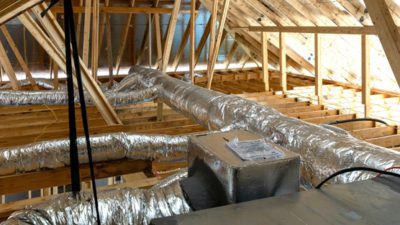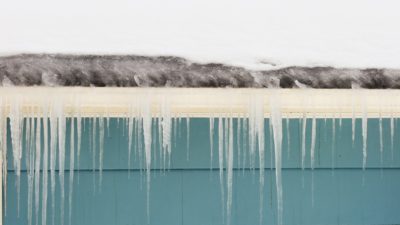Air conditioners keep our homes cool and comfortable, but they can also hide a silent problem: Mold. Understanding why mold forms, the potential health risks, and how to prevent it can help keep your home safe and your AC running clean.
How Does Mold Develop in AC Units?
Air conditioners, including window units and central systems, are surprisingly prone to mold because of moisture buildup. As the evaporator coil cools incoming air, condensation forms. That water collects in a drain pan and, if not thoroughly drained, creates a damp environment ideal for mold to grow. Even well-designed systems can malfunction or be imperfect, leaving moisture behind.
⚠️For example, poor drainage design caused the recent recall of 1.7 million Midea window AC units.
Why Is Mold a Health Concern?
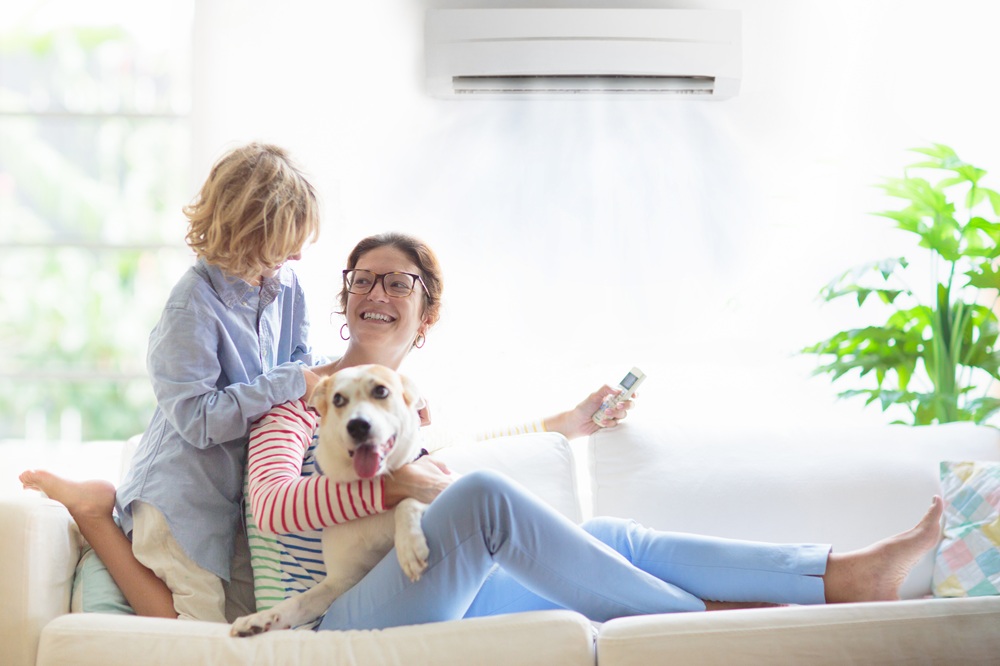
When we breathe in airborne mold spores, they make our airways more sensitive, which can exacerbate existing conditions like asthma and allergies. Those with immunodeficiencies are at a higher risk.
While there’s limited research directly linking mold in AC units to health issues, broader studies on mold and dampness indoors show a connection to:
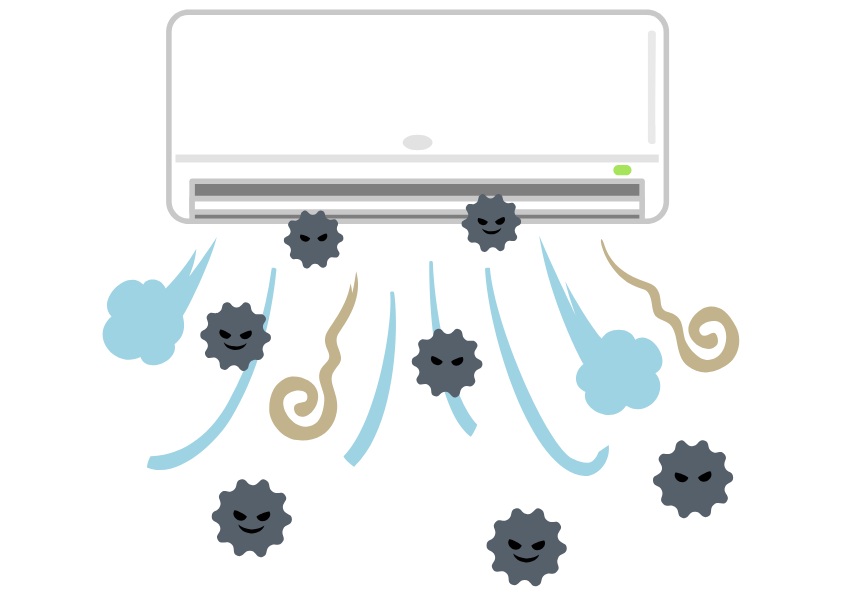
- Nasal congestion
- Itchy sinuses
- Runny nose
- Itchy and/or watery eyes
- Headaches
- Difficulty breathing
- Chronic inflammation of the airways
- Respiratory infection
How to Minimize the Risk of Mold in AC Units
When it comes to mold prevention, regular maintenance can make a big difference:
1. Change or clean filters monthly.
Accumulated dust and moisture create ideal conditions for mold growth. Clean the filters regularly—at least monthly during use—and replace disposable units as needed.
2. Run the fan after cooling.
A helpful trick for window AC users: Run the system’s fan (without cool mode) for about an hour before shutting it off. This helps dry the coils and blades, reducing moisture buildup.
3. Clean coils and drain pans.
Inspect and clean the evaporator coil and drip pan periodically, and be mindful of the manufacturer’s instructions: Bleach solutions may be an option, but not for all units. Always remember to let parts dry thoroughly after cleaning.
4. Inspect regularly, especially after storage.
If you haven’t run the AC in a while, open the unit and check for visible mold. Disassemble per the manual if it’s safe and feasible.
5. Control humidity and ventilation.
High humidity encourages mold growth, so keep your indoor humidity below 60% (ideally 40-50%). Use dehumidifiers and ensure proper airflow.
6. Schedule annual maintenance.
Take care of your HVAC system to ensure health, safety, and longevity. Preventative maintenance and regular tune-ups can also help you avoid expensive and inconvenient breakdowns. HomeWorks Energy offers an MVP Preventive Maintenance Membership for just $24/month, which includes a comprehensive cleaning, tune-up, and system evaluation.
7. Check for a recall.
If your air conditioner falls within the Midea U/U+ recall, especially if purchased between 2020 and 2025, replace or repair it immediately. The manufacturer may issue a redesigned drain plug or a full refund.
How to Recognize Signs of Mold in Your AC Unit
Musty odors when the unit runs
Visible mold spots, often black, green, or gray discoloration on the filter, coil, or drip tray
Increased respiratory symptoms in occupants, especially those with allergies or asthma
What to Do if You Discover Mold in Your AC
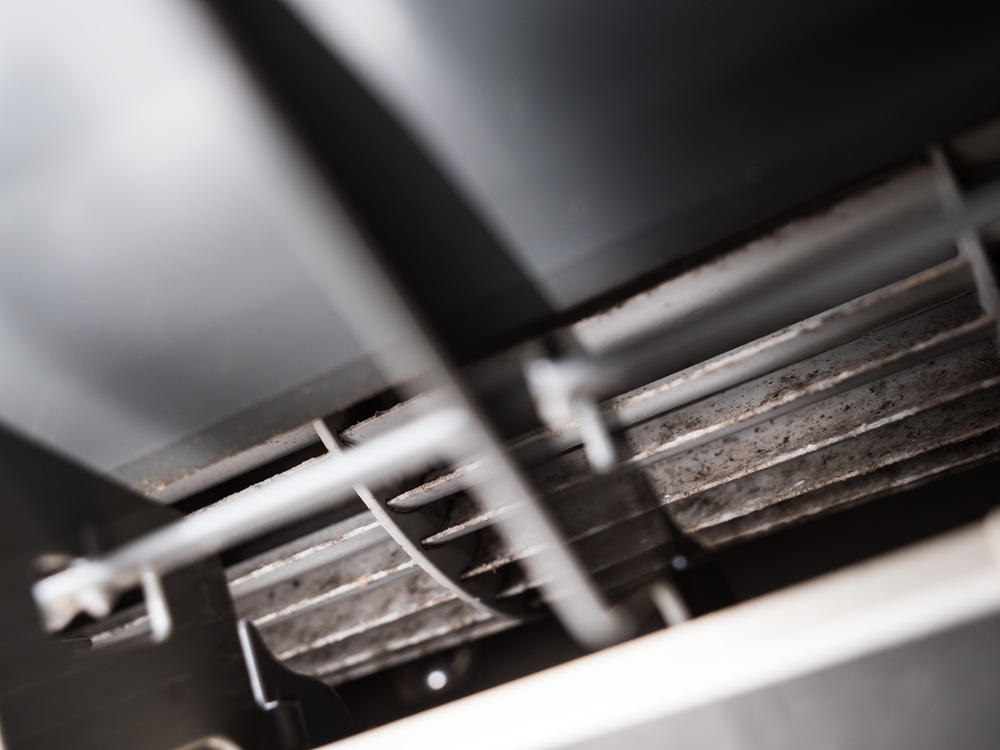
Finding mold in your air conditioner can feel overwhelming, but it’s important to take the proper steps quickly to protect your home and health. Here’s what to do:
Turn off the unit.
Stop running your AC immediately to stop mold spores from spreading through your home.Assess the situation.
For window or portable units: Inspect the filter, coils, and drip tray for visible mold.
For central air systems: Check for musty odors and visible spots on the vents. Widespread or hidden mold may need a professional inspection.
Clean or replace small parts.
Filters: Replace disposable filters or wash reusable ones with warm, soapy water and dry fully.
Coils and drip pans: Wipe down with a mild detergent or a 1:1 vinegar-water solution (only use bleach if the manufacturer allows).
Vacuum dust: Use a HEPA vacuum to remove loose spores and debris.
Call a professional for major or central AC mold.
For extensive mold or central systems, an HVAC professional can:
Deep-clean coils and drain pans
Sanitize ductwork
Fix airflow and drainage issues to prevent mold from returning
Get a No-Cost Cooling Consultation
Keeping your AC clean and mold-free is only part of the equation for a healthy, comfortable home. If your cooling system is outdated, inefficient, or struggling to keep up, it may be time to explore your options.
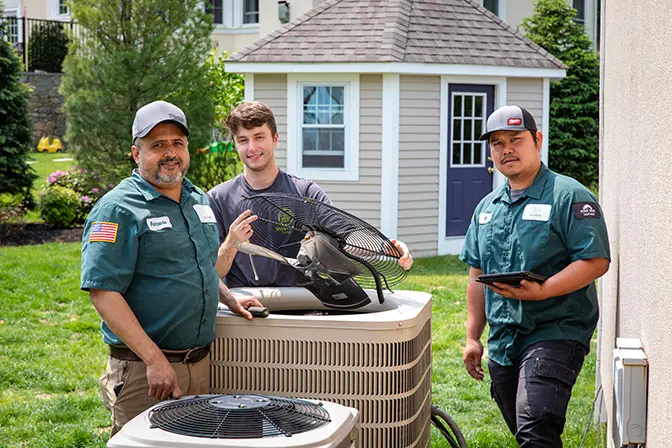
With a no-cost Cooling Consultation from HomeWorks Energy, our expert team will:
Inspect your current air conditioning system and discuss any concerns, including airflow and indoor air quality
Recommend smart, energy-efficient cooling solutions tailored to your home
- Identify opportunities for Mass Save® incentives, including rebates of up to $16,000 if you qualify
A healthier, more comfortable home starts with the right system and regular maintenance.
Mold in air conditioners may go unnoticed, but it can quietly affect indoor air quality and the health of your family, especially for sensitive individuals. With proactive cleaning, humidity control, and awareness of potential hazards, you can protect both your system and your health.


